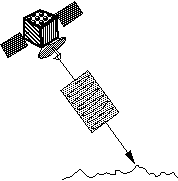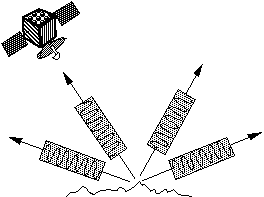Most of Earth's carbon is locked up in carbonate minerals (limestone, etc). If it were all released to the atmosphere through extraordinary heating and volcanism, it would produce an atmosphere just like Venus. The abundance of Nitrogen on Venus appears to be quite close to that on Earth as well.
Why did Venus evolve differently?
With so much CO2 in the atmosphere, the surface of
Venus became very hot. The volcanoes released more CO2
and the rocks at the surface were baked to the point of releasing
still more CO2. Always getting hotter and hotter,
the planet created a run away greenhouse. However, the
temperature is currently in equilibrium, with a surface T = 880F.
Luckily, we're just a bit further from the Sun. The natural heating from the Sun was not so great to put too much water into the atmosphere. However, if you increase the Solar energy to Earth by 40%, it will experience a runaway greenhouse. This will happen in about 2 billion years, as our Sun runs out of fuel and begins to grow into a red giant star.
Mapping Venus' Surface
Using a sophisticated imaging radar, Magellan made the most
highly detailed surface maps of Venus from 1990 to 1994.
It was launched by the space shuttle Atlantis in 1989.
The decay (slowing) of the orbit due to friction in the outer
atmosphere brought the orbiter crashing to the hot surface
in October 1994. How Radar Works:

|

|

|
| Magellan sends light (radio wavelength) towards the surface. It does so at an angle (not directly down). Then it waits to see how much of that light is reflected back towards it. |
Rough Surface. A very rough surface will scatter the light in all directions, meaning a significant amount will scatter right back towards the orbiter, making the surface appear 'bright'. |
Smooth Surface. A smooth surface will scatter the light like a mirror. The light will bounce off at the same angle it came in. Little of the light will go directly back towards the orbiter, making the surface 'dark'. |
When we see radar images: WHITE means ROUGH, DARK means SMOOTH.